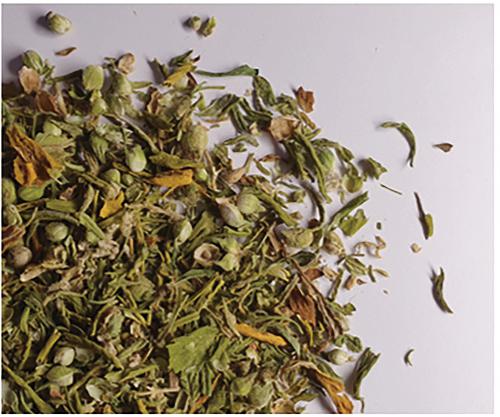当前位置:
X-MOL 学术
›
Drug Test. Anal.
›
论文详情
Our official English website, www.x-mol.net, welcomes your feedback! (Note: you will need to create a separate account there.)
Emergence of the less common cannabinoid Δ8-Tetrahydrocannabinol in a doping sample
Drug Testing and Analysis ( IF 2.9 ) Pub Date : 2021-09-08 , DOI: 10.1002/dta.3159 Sebastian Rzeppa 1 , Joachim Große 1 , Claudia Rautenberg 1 , Detlef Thieme 1 , Triin Lepp 2 , Henn Vallimäe 2 , Annekathrin M Keiler 1, 3
Drug Testing and Analysis ( IF 2.9 ) Pub Date : 2021-09-08 , DOI: 10.1002/dta.3159 Sebastian Rzeppa 1 , Joachim Große 1 , Claudia Rautenberg 1 , Detlef Thieme 1 , Triin Lepp 2 , Henn Vallimäe 2 , Annekathrin M Keiler 1, 3
Affiliation

|
Δ8-Tetrahydrocannabinol (Δ8-THC) as isomer of the well-known Δ9-THC has a similar mode of action, and the potency was estimated to be two thirds compared with Δ9-THC. Content of Δ8-THC in plant material is low, but formulations containing Δ8-THC in high concentrations are gaining popularity. Δ8-THC is to be regarded as prohibited substance according to the Prohibited List of the World Anti-Doping Agency (WADA). Contradictory results between initial testing procedure and confirmatory quantitation for 11-Nor-9-carboxy-Δ9-tetrahydrocannabinol (Δ9-THC-COOH) of a doping control sample gave rise for follow-up testing procedures. After alkaline hydrolysis and liquid–liquid extraction, the sample was analyzed by high-performance liquid chromatography tandem mass spectrometry (HPLC-MS/MS) using isocratic elution instead of gradient elution, which is used for standard procedure. Isocratic elution resulted in two peaks instead of one using gradient elution. Both peaks showed same fragmentation. Using certified reference materials, one peak could be assigned to Δ9-THC-COOH and the other one with higher intensity to the less common 11-Nor-9-carboxy-Δ8-Tetrahydrocannabinol (Δ8-THC-COOH) in a concentration of approximately 1200 ng/ml. As complementary method, gas chromatography tandem mass spectrometry (GC-MS/MS) can also be used for identification. Here Δ8- and Δ9-THC-COOH can be distinguished by chromatography and by fragmentation. Additional investigations of doping control samples containing Δ9-THC-COOH revealed the simultaneous presence of Δ8-THC-COOH in low concentrations (0.22–8.91 ng/ml) presumably due to plant origin. Percentage of Δ8-THC-COOH varies from 0.05 to 2.83%. In vitro experiments using human liver microsomes showed that Δ8-THC is metabolized in the same way as Δ9-THC.
中文翻译:

兴奋剂样品中出现不太常见的大麻素 Δ8-四氢大麻酚
Δ 8 -四氢大麻酚 (Δ 8 -THC) 作为众所周知的 Δ 9 -THC 的异构体具有相似的作用方式,与 Δ 9 -THC相比,估计效力为三分之二。植物材料中Δ 8 -THC 的含量较低,但含有高浓度 Δ 8 -THC 的制剂越来越受欢迎。Δ 8 -THC 根据世界反兴奋剂机构 (WADA) 的禁用清单被视为禁用物质。11-Nor-9-羧基-Δ 9 - 四氢大麻酚 (Δ 9-THC-COOH) 的掺杂对照样品为后续测试程序提供了依据。在碱解和液-液萃取后,采用等度洗脱代替梯度洗脱的高效液相色谱串联质谱 (HPLC-MS/MS) 对样品进行分析,该梯度洗脱用于标准程序。等度洗脱导致两个峰,而不是一个使用梯度洗脱的峰。两个峰显示相同的碎片。使用经过认证的参考物质,一个峰可以分配给 Δ 9 -THC-COOH,而另一个强度较高的峰可以分配给不太常见的 11-Nor-9-carboxy-Δ 8 -Tetrahydrocannabinol (Δ 8-THC-COOH),浓度约为 1200 ng/ml。作为补充方法,气相色谱串联质谱(GC-MS/MS)也可用于鉴定。这里 Δ 8 - 和 Δ 9 -THC-COOH 可以通过色谱法和碎裂来区分。对含有 Δ 9 -THC-COOH的兴奋剂对照样品的进一步研究揭示了同时存在低浓度 (0.22–8.91 ng/ml) 的 Δ 8 -THC-COOH,这可能是由于植物来源。Δ 8 -THC-COOH 的百分比在 0.05 至 2.83% 之间变化。使用人肝微粒体的体外实验表明,Δ 8 -THC 的代谢方式与 Δ 9 -THC 相同。
更新日期:2021-09-08
中文翻译:

兴奋剂样品中出现不太常见的大麻素 Δ8-四氢大麻酚
Δ 8 -四氢大麻酚 (Δ 8 -THC) 作为众所周知的 Δ 9 -THC 的异构体具有相似的作用方式,与 Δ 9 -THC相比,估计效力为三分之二。植物材料中Δ 8 -THC 的含量较低,但含有高浓度 Δ 8 -THC 的制剂越来越受欢迎。Δ 8 -THC 根据世界反兴奋剂机构 (WADA) 的禁用清单被视为禁用物质。11-Nor-9-羧基-Δ 9 - 四氢大麻酚 (Δ 9-THC-COOH) 的掺杂对照样品为后续测试程序提供了依据。在碱解和液-液萃取后,采用等度洗脱代替梯度洗脱的高效液相色谱串联质谱 (HPLC-MS/MS) 对样品进行分析,该梯度洗脱用于标准程序。等度洗脱导致两个峰,而不是一个使用梯度洗脱的峰。两个峰显示相同的碎片。使用经过认证的参考物质,一个峰可以分配给 Δ 9 -THC-COOH,而另一个强度较高的峰可以分配给不太常见的 11-Nor-9-carboxy-Δ 8 -Tetrahydrocannabinol (Δ 8-THC-COOH),浓度约为 1200 ng/ml。作为补充方法,气相色谱串联质谱(GC-MS/MS)也可用于鉴定。这里 Δ 8 - 和 Δ 9 -THC-COOH 可以通过色谱法和碎裂来区分。对含有 Δ 9 -THC-COOH的兴奋剂对照样品的进一步研究揭示了同时存在低浓度 (0.22–8.91 ng/ml) 的 Δ 8 -THC-COOH,这可能是由于植物来源。Δ 8 -THC-COOH 的百分比在 0.05 至 2.83% 之间变化。使用人肝微粒体的体外实验表明,Δ 8 -THC 的代谢方式与 Δ 9 -THC 相同。


























 京公网安备 11010802027423号
京公网安备 11010802027423号